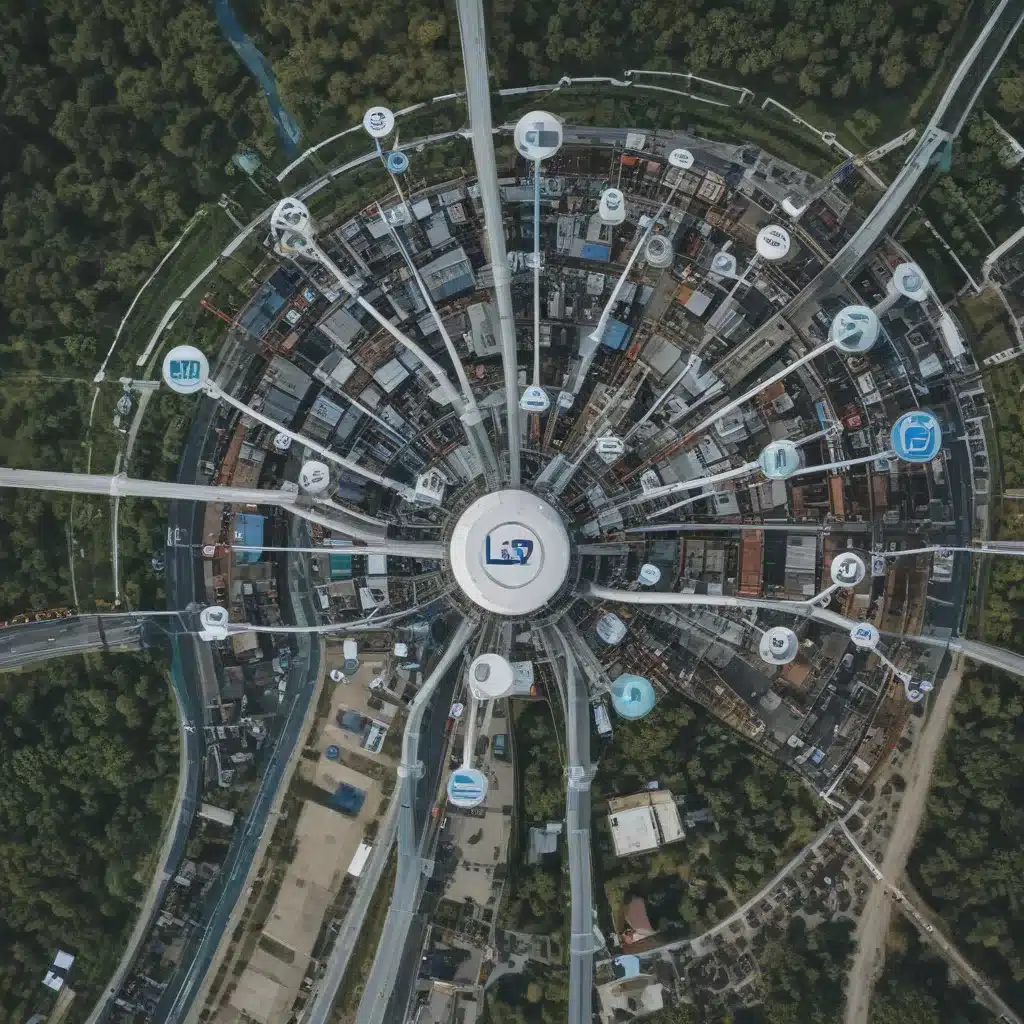As a techie, I’m always on the lookout for the latest and greatest innovations in the world of IoT (Internet of Things). And when it comes to long-range connectivity options, the field of LPWANs (Low-Power Wide-Area Networks) has really caught my eye.
You see, I’ve been tinkering with all sorts of connected devices – from smart home gadgets to industrial sensors. And let me tell you, finding the right wireless technology to power these IoT applications can be a real headache. Do I go with classic options like cellular or WiFi? Or is there something more specialized that could be a better fit?
Well, after diving deep into the world of LPWANs, I think I’ve found the answer. These long-range, low-power networks are like the unsung heroes of the IoT world, offering a unique set of advantages that could be game-changing for all sorts of use cases.
Understanding LPWANs
First things first – let’s get a handle on what LPWANs actually are. As the name suggests, these are wireless networks designed to cover wide areas while consuming minimal power [1]. We’re talking ranges of up to 10 km in urban settings and even up to 40 km in rural areas, all while running on tiny, inexpensive batteries for years on end.
The trade-off, of course, is that LPWANs are limited to transmitting small data packets at relatively low bitrates – usually less than 50 kbps. But the way I see it, that’s a small price to pay for the incredible reach and efficiency they offer [2].
LPWANs vs. Other IoT Connectivity Options
Now, you might be wondering how LPWANs stack up against other popular IoT connectivity technologies. Well, let me break it down for you:
| Technology | Range | Power Consumption | Bandwidth |
|---|---|---|---|
| Cellular (4G/5G) | Wide | High | High |
| WiFi | Medium | High | High |
| Bluetooth | Short | Low | Low |
| RFID | Short | Low | Very Low |
| LPWANs | Wide | Very Low | Low |
As you can see, LPWANs carve out a unique niche, offering the best of both worlds – wide-area coverage and super-low power needs. This makes them a perfect fit for all sorts of IoT applications, from smart city infrastructure to industrial asset tracking [3].
And the best part? LPWANs come in a variety of flavors, each with its own strengths and use cases. You’ve got options like LoRaWAN, Sigfox, NB-IoT, and LTE-M, all vying for a piece of the LPWAN pie [4]. It’s like a connectivity smorgasbord, just waiting to be explored.
Use Cases Galore
So, where exactly can these long-range, low-power networks shine? Well, the possibilities are endless, my friends. Think smart metering, environmental monitoring, logistics and supply chain management, precision agriculture, and so much more [5].
Let me give you a real-world example that really showcases the power of LPWANs. Imagine a network of water meters scattered across a sprawling city, each one equipped with an LPWAN-connected sensor. These sensors can transmit data on water usage and leaks, allowing the utility company to optimize operations and catch issues before they become major problems [6].
Or how about asset tracking in a massive warehouse? With LPWAN-enabled tags, you can keep tabs on your inventory with pinpoint accuracy, no matter where it’s located. No more frantic searches or frustrated customers – just seamless, efficient logistics [7].
And let’s not forget about the environmental impact. LPWANs can enable large-scale sensor networks for things like air quality monitoring, soil moisture tracking, and wildlife conservation. I mean, talk about making a difference, right? [8]
The Future is Bright
As I dive deeper into the world of LPWANs, I can’t help but get excited about the potential. These long-range, low-power networks are already making waves in the IoT space, and I have a feeling we’re just scratching the surface.
Whether it’s smart cities, industrial automation, or environmental conservation, LPWANs are poised to play a crucial role in shaping the future of connected technologies. And as a tech enthusiast, I can’t wait to see what innovative applications will emerge in the years to come.
So, if you’re as geeked out about the IoT as I am, keep your eyes peeled for the latest LPWAN developments. Trust me, this is one connectivity option that’s definitely worth keeping an eye on.
[1] https://www.techtarget.com/iotagenda/definition/LPWAN-low-power-wide-area-network
[2] https://www.leverege.com/blogpost/lpwan-benefits-vs-iot-connectivity-options
[3] https://www.zipitwireless.com/blog/5-types-of-wireless-iot-technology
[4] https://www.intuz.com/blog/lpwan-vs-lorawan-the-better-technology-for-iot-device
[5] https://www.iotworldtoday.com/metaverse/iot-connectivity-options-comparing-short-long-range-technologies
[6] https://datablaze.com/resources/articles/low-power-wan-nb-iot-and-cat-m1-cellular-networks/
[7] https://ubidots.com/blog/exploring-cat-m1-nb-iot-lpwan-connections/
[8] https://www.seeedstudio.com/blog/2024/01/22/4-most-promising-lpwan-connectivity-a-comprehensive-comparison-of-lorawan-amazon-sidewalk-helium-and-cat-m/













